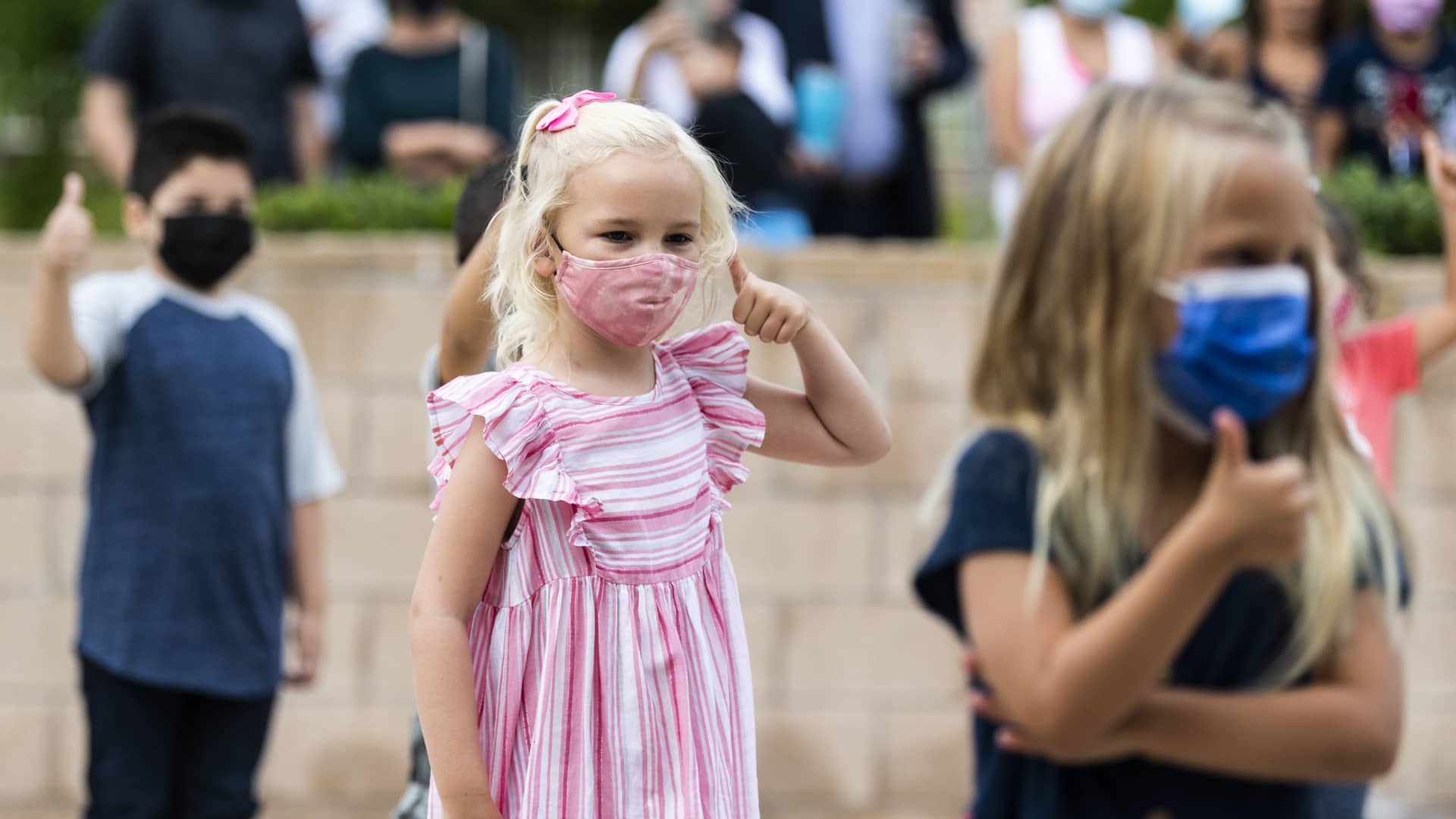Covid vaccines for kids under 5 move closer to FDA authorization after committee backs shots


Moderna and Pfizer’s Covid-19 vaccines for infants through preschoolers have moved a step closer to authorization by the Food and Drug Administration.
The FDA’s committee of independent vaccine experts unanimously voted to recommend the shots for use in the youngest children after weighing how safe and effective they are during an all-day public meeting.
The FDA will likely accept the committee’s guidance and quickly authorize the shots. The Centers for Disease Control and Prevention then has to sign off on the vaccines before pharmacies and doctors’ offices can start administering them to the kids.
Parents will likely be able to get their kids immunized as soon as Tuesday, though appointments might be limited at first as the vaccination program ramps up, according to Dr. Ashish Jha, who oversees the White House’s response to the pandemic.
Covid is generally less severe in children than adults. However, hospitalizations of kids under age 5 spiked during the omicron wave, hitting the highest level of the pandemic. The hospitalization rate during omicron was as bad or worse for these kids than any recent flu season, according to the CDC.
Covid has killed 202 six-month to 5-year-olds since January 2020. Children under age 5 are the only age group left in the U.S. not eligible vaccination. Many parents have been waiting months for the FDA to authorize the shots.
“We have to be careful that we don’t become numb to the number of pediatric deaths because of the overwhelming number of older deaths. Every life is important,” Dr. Peter Marks, head of the FDA’s vaccine division, told the committee.
“For those who have lost children to Covid-19, our hearts go out to them because each child that’s lost essentially fractures a family,” Marks said.
Pfizer three-dose vaccine
Pfizer and Moderna’s vaccines for the youngest kids differ in a number of ways, including how many shots they use, the dosing level, and the eligibility age.
Pfizer’s vaccine is administered in three doses for kids ages six months to 4-years-old. The shots are dosed at 3 micrograms, one-tenth of what adults receive.
Pfizer’s three-dose vaccine was about 75% effective at preventing illness from omicron in 6 month to 2-year-olds, and 82% effective against omicron in 2- to 4-year-olds.
Dr. Doran Fink, a senior official in the FDA’s vaccine division, said the effectiveness of Pfizer’s vaccine after dose three is an imprecise estimate that is subject to change as more data becomes available.
The third shot is crucial for Pfizer’s vaccine because two doses offered little protection. The FDA had originally sought to fast track the first two doses in February, but Pfizer postponed its submission because the data wasn’t good enough. Two doses were about 14% effective for kids under age 2, and 33% effective for those ages 2 to 4.
Dr. Paul Offit, an FDA committee member, said Pfizer’s 3-microgram doses might be too small. Offit said it’s important for parents to know that their children are not protected after two doses and must get the third Pfizer shot.
“I do worry that parents aren’t necessarily going to know that after two doses, they may not be protected at all and will engage the kind of activity that would put their child at risk,” said Offit, a pediatrician at Children’s Hospital of Philadelphia.
Moderna two-dose vaccine
Moderna’s vaccine is administered in two doses for kids six months to 5-years-old. The shots are dosed at 25 micrograms, one-fourth of what adults receive.
Moderna’s two-dose vaccine was about 51% effective at preventing illness from omicron for kids six months to 2-years-old, and about 37% effective for kids ages 2 to 5-years-old. Moderna expects two doses will protect against severe disease from omicron at similar levels observed in adults, said Jacqueline Miller, an executive with the company.
Moderna plans to publish data on a third dose targeting the omicron variant in this age group over the summer and ask the FDA to review that data as soon as possible, Miller said.
“However, as children under 4 have had the greatest increase in their risk of hospitalization due to Covid-19 during the omicron surge, initiating this vaccination series now is vital to start protecting children this summer,” Miller told the committee.
Panel member Dr. Jay Portnoy said he was disappointed that Moderna’s vaccine didn’t do a better job at preventing Covid infections. However, Portnoy said the shots will prevent kids from getting severely ill.
“The evidence is pretty clear for preventing severe disease, hospitalization and emergency visits,” said Portnoy, a professor of pediatrics at the University of Missouri-Kansas City. “This vaccine is very effective. It’s also very safe to use,” he said.
Safety
The most common side effects of both vaccines are pain at the injection site, irritability and crying, loss of appetite and sleepiness, according to FDA presentations. Very few children who received either vaccine developed a fever greater than 102 degrees Fahrenheit, or 39 degrees Celsius. There were no cases of myocarditis, a type of heart inflammation, among the kids in Pfizer and Moderna’s trials.
However, committee member Dr. Cody Meissner said the safety profile of the vaccines in children under age 5 is not as well established as in adolescents and adults. Meissner, a professor of pediatrics at Tufts University, said the shots should be an option for parents, not a requirement. He said the FDA and CDC should continue to closely monitor the vaccines’ safety.
Marks, head of the FDA’s vaccine division, said the agency’s experts work day and night to understand the safety profile of the vaccines and will continue to do so. He said the FDA will alert the public to any rare side effects, as it has done with myocarditis in adolescent boys.
“We care tremendously at FDA about the safety and effectiveness of these vaccines and we will continue to monitor these vaccines as they are deployed,” said Marks.
Marks also cautioned the public against drawing conclusions about the vaccines’ safety from the FDA and CDC database, known as VAERS. Anyone can submit a report to that database, which is open the public, but experts have to comb through the raw data to determine when there’s really an association between an adverse event and the vaccines, he said.
“For rare adverse events, we will make sure the public knows about them,” Marks said.
This post has been syndicated from a third-party source. View the original article here.



